Japanese cast iron teapot is intended to hold the heat in. Originating from the Japanese cast iron teakettle called a tetsubin.

Everyone loves cooking with cast iron. If you have a cast iron skillet, you know what I mean. They are heavy, durable, and hold the heat.
The tetsubin is a Japanese tea kettle made of cast iron used for boiling water over a heat source. The Japanese teapot used for steeping tea is called a tetsukyusu. The tetsubin dates back to the 1600s when iron kettles were placed on the hearth.
The confusion begins when people refer to the cast iron teapot as a tetsubin instead of its correct name, tetsukyusu.
The classic tetsubin is black with a pebbled surface. Over the years, Japanese artisans began to embellish the tea kettles as they evolved from kettles to teapots placed on the table for serving. Many beautiful designs now incorporate color and consist of cherry blossoms, the national flower of Japan, or the dragonfly, which signifies new beginnings.
The other difference is the tea kettle is pure iron, with no enamel lining, and is used to boil water. The iron is thought to make tea taste better. On the other hand, the iron teapot is often lined with enamel and is used to steep tea only. I'm not sure of the reason for the enamel lining.

Shades of Earl Grey - $19.95
from: Firebelly Teas Inc.
Every culture has its way of brewing, presenting, and sharing tea. The specific teaware used is critical to the entire process. Most Western countries use porcelain teapots and English-style brewing; the Chinese use gongfu-style brewing with a Gawain, while Russia, Eastern European, and Middle Eastern countries may use a Samovar.
Today, I will focus on the Japanese tetsubin and how the Japanese culture developed this particular teapot and style of tea brewing.
Sencha Tea
Traditionally, the tetsubin design was made for brewing sencha, a quintessential Japanese green tea produced yearly.
Sencha is the most popular tea in Japan. Much different than matcha, it is a leaf tea, plucked and processed throughout the harvest seasons. The first and second flush sencha is considered the best, sweeter, and more robust flavor than each subsequent flush.
Unlike China or India, the specific tea estate or region is not named in selling sencha. Almost always, sencha tea is blended with the signature touch of each artisan, creating a signature brand for the tea company or shop. No matter the grade, all sencha is high in vitamin C.
Most Japanese tea is not made for export. It's probably safe to say that what is exported is perhaps not their best tea. However, I have had excellent sencha from Adagio Tea. It's an excellent place to start.
The Japanese Way of Tea
The Japanese way of tea created a unique culture, transcending the commonplace through the prevalent act of drinking tea. The Japanese tea ceremony infuses spiritualism into the art of making tea by taking the very ordinary and elevating it to something extraordinary.
Those who cannot feel the littleness of great things in themselves are apt to overlook the greatness of little things in others."
– Okakura Kakuzo, The Book of Tea
Entire books have been written on the Japanese Way of Tea called chanoyu, the Japanese tea ceremony. This ceremony is the formal art of making tea surrounding the powdered matcha tea. Another Japanese tea ceremony uses leaf tea or sencha. A ceremonial grade sencha called gyokuro is used. This rare tea, like matcha, is shaded just three weeks before harvest to increase the chlorophyll, resulting in a sweeter taste.
The Zen monks promoted Sencha, and it highly influenced Japanese art. The Japanese cast iron tea kettle was initially designed for the ruling class in the 17th century. By the 18th and 19th centuries, the Japanese literati used it extensively, becoming part of everyday tea.
Guide to Purchasing and Using a Cast Iron Teapot
The Japanese cast iron teapot is one of my favorites, of which I have many. A good quality one can be expensive but worth the investment as they last for generations.
Some years ago, I quit drinking coffee and drank tea exclusively. I'd always been a tea drinker but took up coffee in college for those marathon all-night study and paper writing sessions. I gifted myself the blue cast iron teapot pictured here when I ditched the coffee habit. This beautiful cherry-blossomed Japanese tetsubin cast iron teapot came from Teavana (now closed). It came with a large stainless strainer and cast iron trivet.
You can find a beautiful Japanese cast iron teapot or kettle from reputable companies such as Kunzan, Nambu, and Iwachu. Artisan ironworkers in Yamagata are revered for their skills, and teakettles made in this region are held in high regard.
For a thousand years, a special kind of sand found in the local river of Yamagata has been used in cast-iron work. Wazuqu is a brand developed in the Yamagata region. They have been making teapots for over 400 years.
Interior enameled coating and stainless steel tea infusers have been added for ease of brewing. I recommend heatproof trivets to complete the package.
You can steep fine loose-leaf tea directly in the mesh strainer that comes with it. You can use it to brew any loose-leaf tea. If you purchase a Japanese cast iron teapot with a glazed or enameled interior, you don't need to dedicate the teapot to just one type of tea.
The heavy cast iron teapot will keep your tea hot for at least an hour.
Related:
- 10 Best Online Tea Shops
- The First Teapot Origins and Adventures in Tea History
- A Simple Guide To The Best Japanese Green Tea
Caring for Your Japanese Cast Iron Teapot
Uncoated iron teapots allow more of the iron to infuse in the water, which some say adds flavor to the tea. The risk of an uncoated teapot is that you must be careful to prevent rusting. Be sure to dry your teapot entirely after washing. Do not use detergent or abrasives when washing.
Although the original Japanese tetsubin cast iron tea kettle was made for boiling water, cast iron teapots are only for brewing tea. Most manufacturers do not recommend using this as a kettle to heat water over a flame, glass, or electric burner.
Expect to pay anywhere from 100 to 200 USD for a cast iron tea kettle, depending on the size. A cast iron teapot is typically less expensive. Adagio sells a beautiful cast iron teapot. They always look nice on the table and make a perfect gift for any tea lover.
I would advise a trivet under the teapot because they get very hot. But on the flip side, the Japanese cast iron teapot will keep the tea inside lovely and hot for multiple pours. Excellent when you're serving company or simply sipping tea all morning!
Thanks for Reading
Thank you all for connecting with me on this beautiful tea journey! I am so grateful you've joined. I hope that you will not only enjoy tea for the excellent beverage that it is but that you will also make it a way of a healthier lifestyle for yourself, your family, and your friends.
The gift of tea is a gift of love. ♡
Tea for Beginners Start Here >>



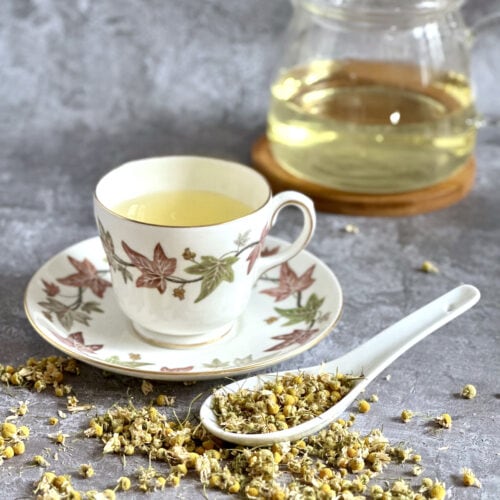
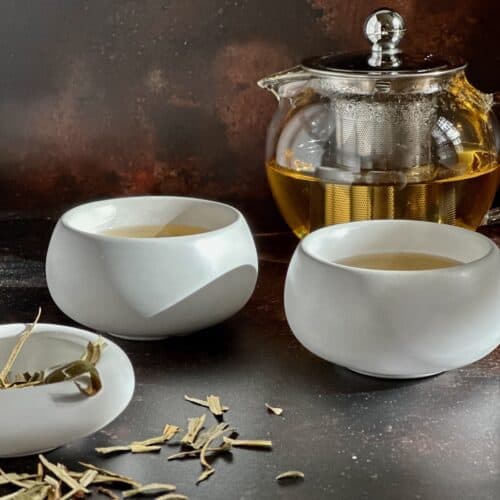
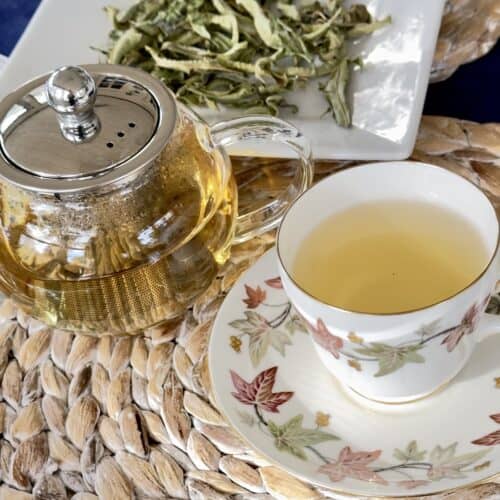
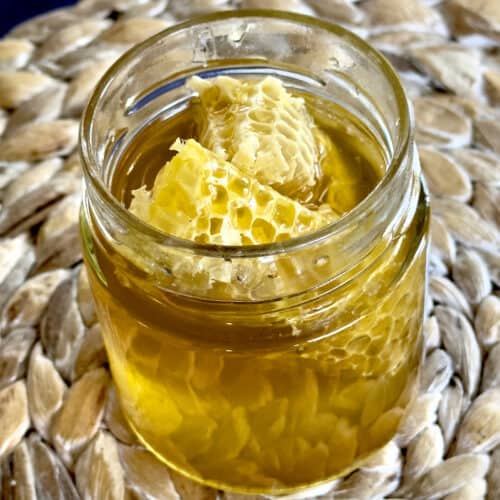
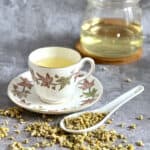
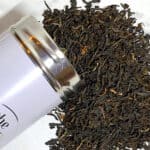
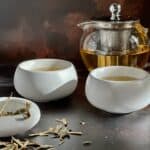
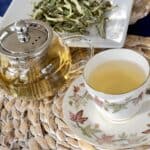


Janice
Loved this article thanks!
Janice Robinson
Lujun Liang
Greetings to you and your esteemed Company,
This is Lujun from Xinghua Casting factory, we mainly produce and export cast iron teapots, our teapot passed SGS and FDA testing, All materials are FDA-approved and certified lead-free. A good choice for brewing teas, it is also an art to furnish and decorate a room.a good choice for festival gift. We can send you our list with prices for your reference.
Sincerely hope to hear from you soon.
my email xhcasting@163.com
With my best regards,